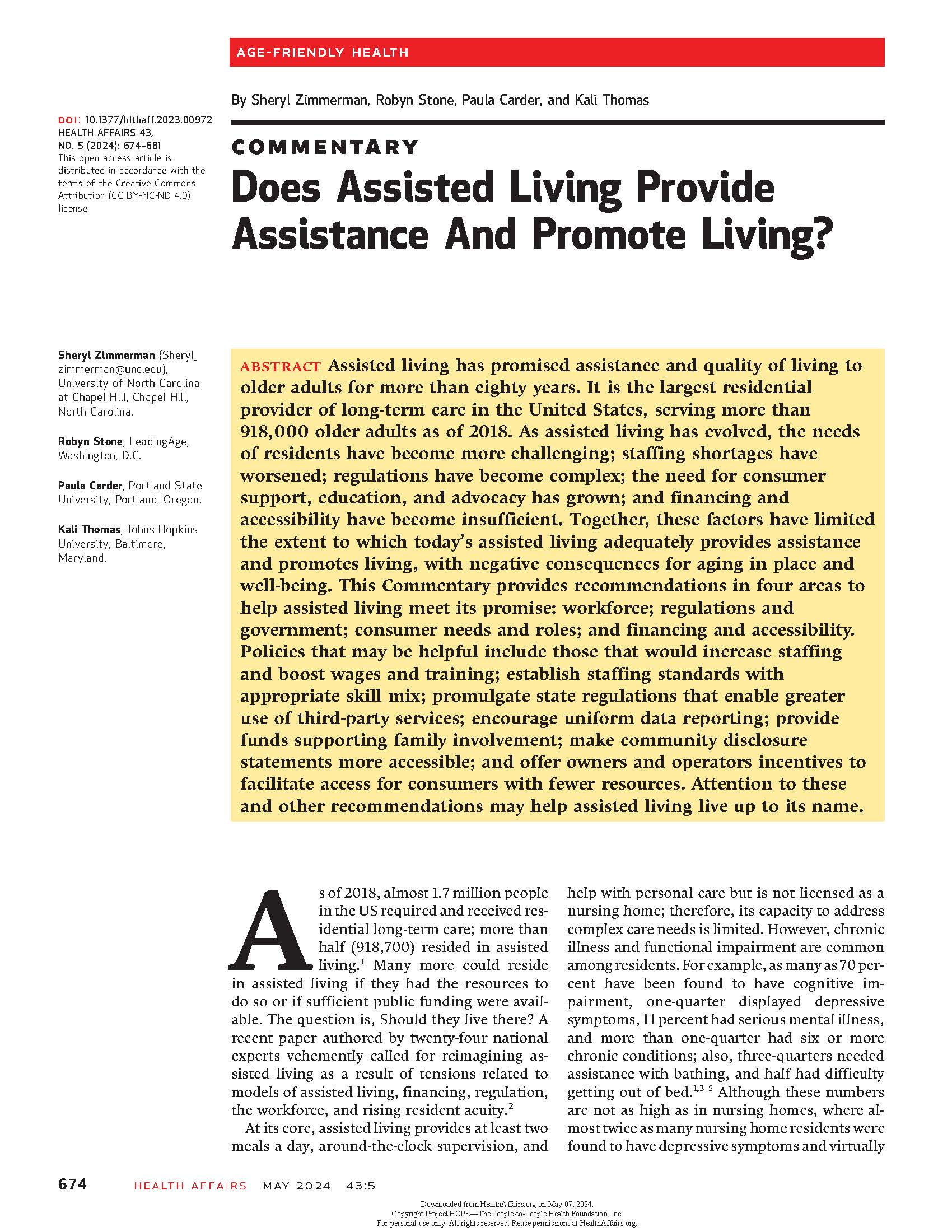Objectives
To examine the relationship between AL communities’ distance to the nearest hospital and residents’ rates of emergency department (ED) use. We hypothesize that when access to an ED is more convenient, as measured by a shorter distance, assisted living (AL)-to-ED transfers are more common, particularly for nonemergent conditions.
Design
Retrospective cohort study, where the main exposure of interest was the distance between each AL and the nearest hospital.
Setting and Participants
2018-2019 Medicare claims were used to identify fee-for-service Medicare beneficiaries aged ≥55 years residing in AL communities.
Methods
The primary outcome of interest was ED visit rates, classified into those that resulted in an inpatient hospital admission and those that did not (ie, ED treat-and-release visits). ED treat-and-release visits were further classified, based on the NYU ED Algorithm, as (1) nonemergent; (2) emergent, primary care treatable; (3) emergent, not primary care treatable; and (4) injury related. Linear regression models adjusting for resident characteristics and hospital referral region fixed effects were used to estimate the relationship between distance to the nearest hospital and AL resident ED use rates.
Results
Among 540,944 resident-years from 16,514 AL communities, the median distance to the nearest hospital was 2.5 miles. After adjustment, a doubling of distance to the nearest hospital was associated with 43.5 fewer ED treat-and-release visits per 1000 resident years (95% CI -53.1, -33.7) and no significant difference in the rate of ED visits resulting in an inpatient admission. Among ED treat-and-release visits, a doubling of distance was associated with a 3.0% (95% CI -4.1, -1.9) decline in visits classified as nonemergent, and a 1.6% (95% CI -2.4%, -0.8%) decline in visits classified as emergent, not primary care treatable.
Conclusions and Implications
Distance to the nearest hospital is an important predictor of ED use rates among AL residents, particularly for visits that are potentially avoidable. AL facilities may rely on nearby EDs to provide nonemergent primary care to residents, potentially placing residents at risk of iatrogenic events and generating wasteful Medicare spending.


